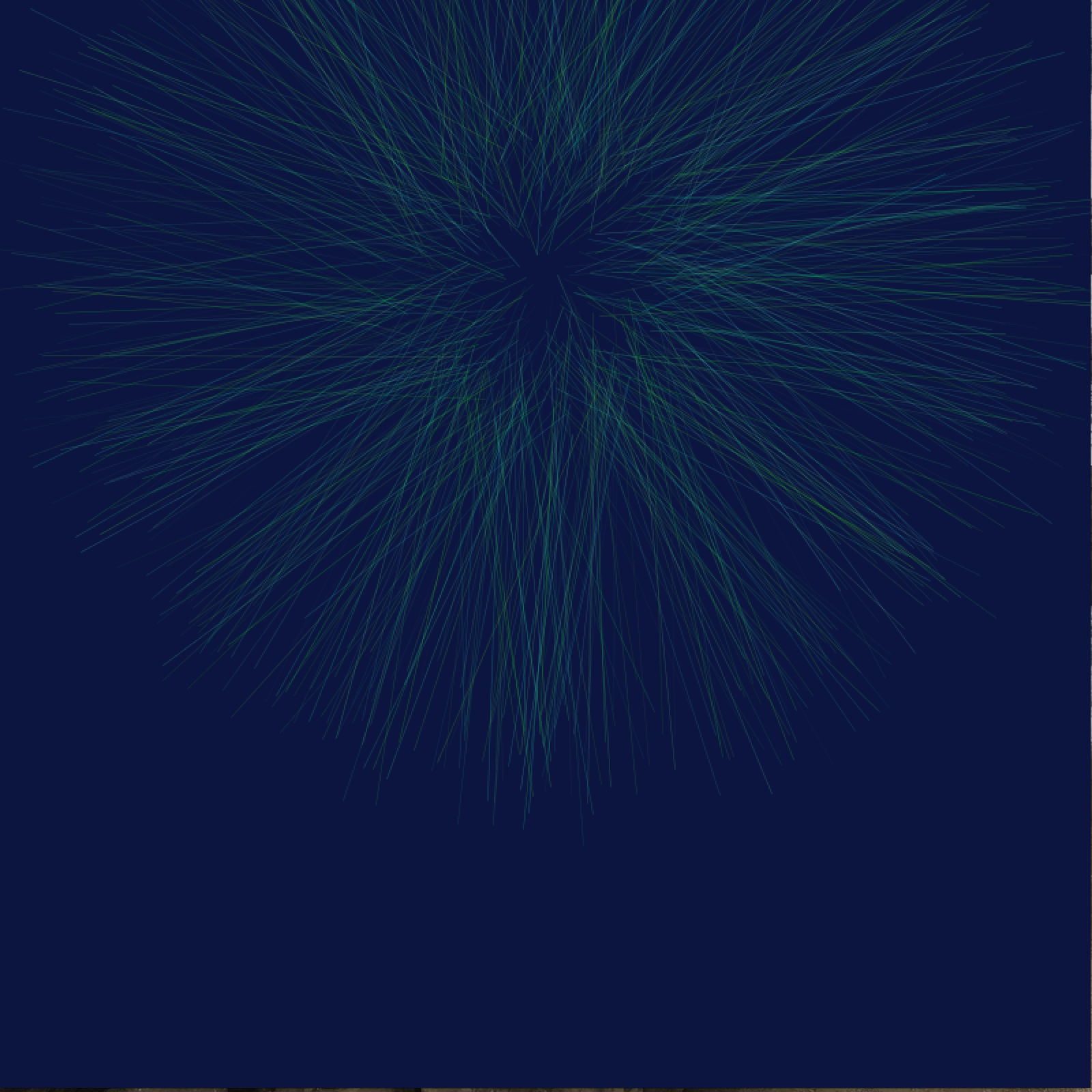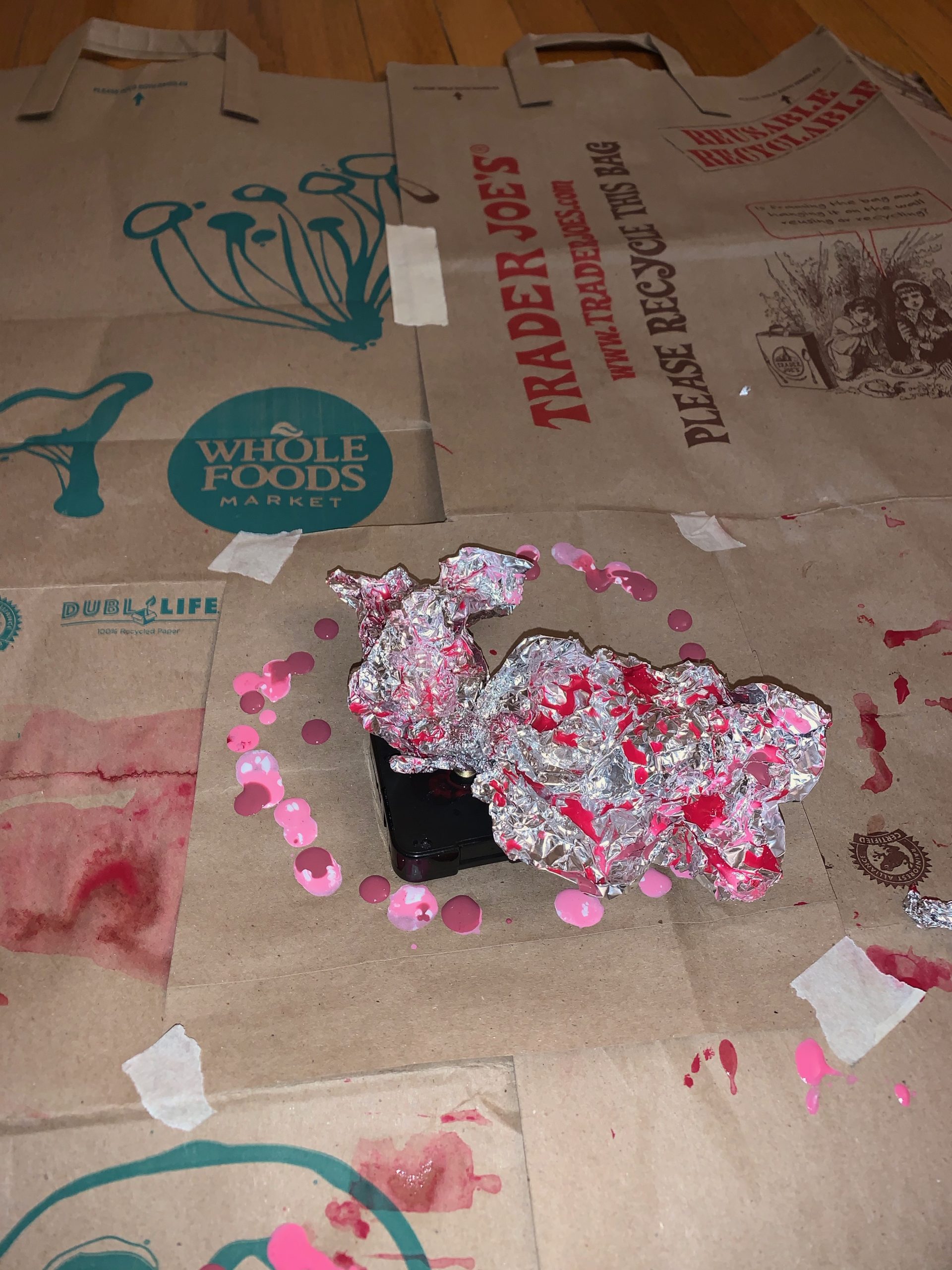To say that machines can not be a part of art, is to completely misinterpret the definition of art. I can not say what art is and what it is not because that would make me as hypocritical as the ones who limit it. Our first assignment in this class was glitching. From what I have read and produced, glitching is the art of taking a photograph and rearranging its code to change the final picture. From my experience throughout the semester so far I have been able to develop a preference within the machines we have had to used. Our first project was glitching photographs of trees, an art done by manipulating the pictures code code. This is done by changing the digital photograph to a text document. Which would allow me to change the code in the photo resulting in obstructions in the image when it was reverted back to a .png.
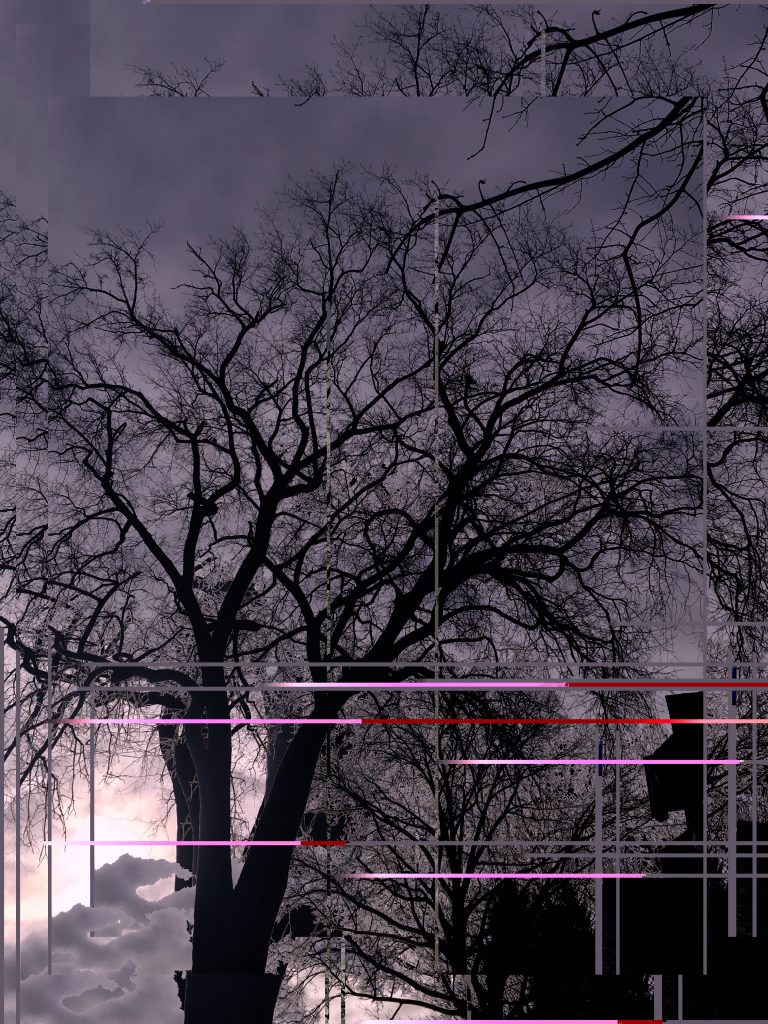
This is one of my favorite photo that I glitched because I felt really accomplished after finishing it. After reading Rosa Menkman’s “A GUIDE TO DATABEND COMPRESSION DESIGN” I felt more knowledgeable and yet more intimiated to glitch. The glitching processes used in that handbook brought to light the immense possibilities of glitch art. I used these new perspective in these next glitching assignments
Glitching was a valuable lesson which broadened my perspective on art. The scanner project I think was a class hit, I really enjoyed working next to my classmates and building off each others ideas.
For this first image I used natural textures that I found outside and combined with synthetic materials. As I moved the styrofoam cup with flowers in it across the scanner I found it had a sort of melting effect that I could lay over other scans. I found that the higher the resolution the slower the scanner processed. This allowed more detailed the scan the more control over what the scan would look like. In addition, the preview setting was extremely helpful to predict what the final image would look at. I took advantage of this idea and took really high definition pictures of leaves.
For the scan I took a completely different approach and I believe I was much more creative. I found the lack of control to be liberating. I used tinted folder sheets and wrote down the lyrics of Take a Walk on the Wild Side by Lou Reed which is much more personalized to me.
I found that I really enjoyed taking code of different pictures and adding it to the code of another picture. I took apart multiple digital pictures of my family to make this one. This is mostly a reflection of memory and how the construction, recall, and deterioration of memories is constantly fluctuating in our brain. Glitch art was a perfect segway into our spirograph rose math art. This one was probably my favorite because it reminded me so much of Art from Code. Spirograph art is based on the spirograph device which is a series of points which indicate when I pencil or pen should be held. As the person pushes on the spirograph the points make a pattern, each point makes a different pattern.
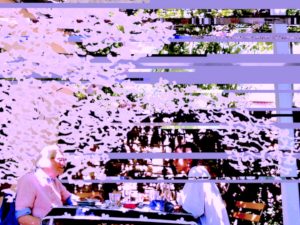
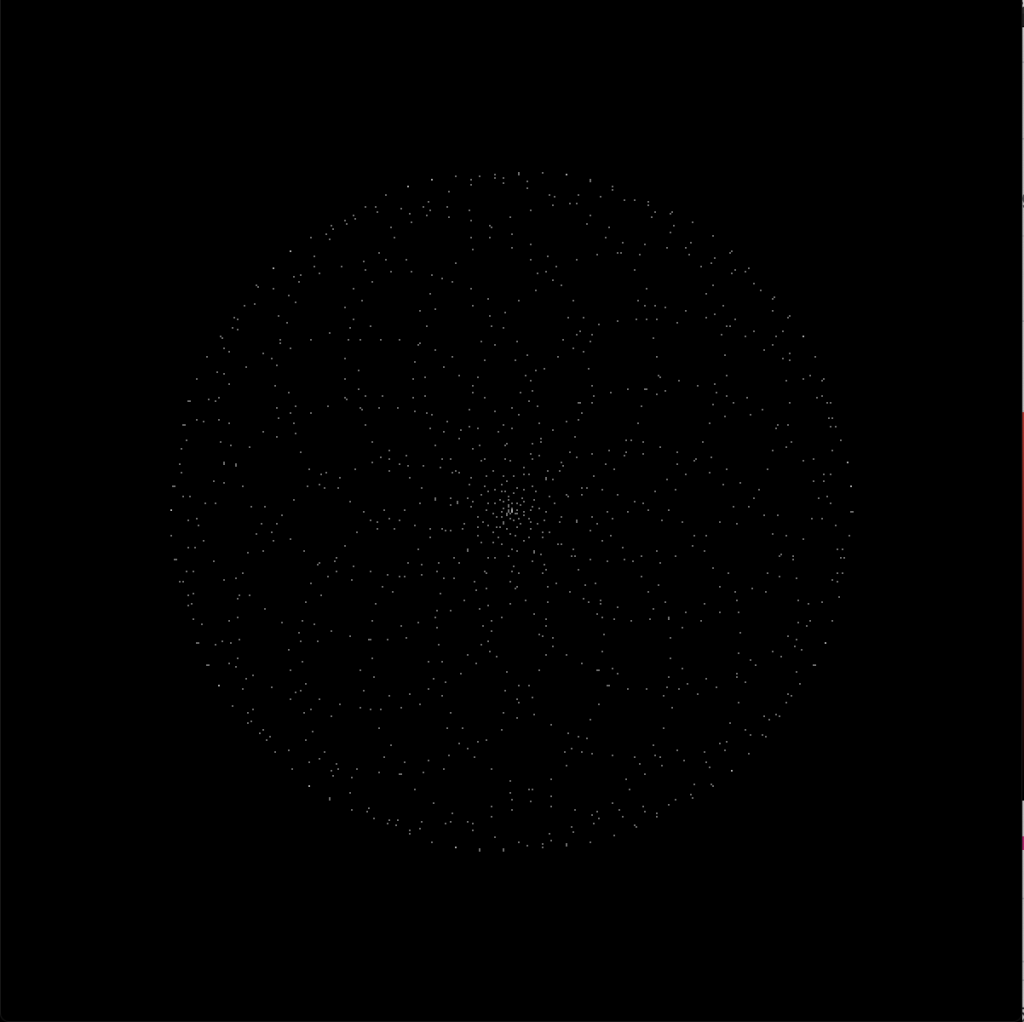
This was my spirograph. I made it so on the onclick( ); command the background resets and the spirograph patterns repeats. This gives it a really surprising pattern every time because I randomized some of the variables. I enjoyed this process a lot because it gave so many variables to randomize and yet it always produces a symmetrical shape. The way that a spirograph works related perfectly to the next project we had to do which was a more hands on physical machine.

This drawing machine allowed me to combine two aspects of academics I really enjoy, drawing machines, and psychology. This machine is inspired by a simple machine that psychologist used on a landmark patient HM. HM was a patient who had major surgery on his brain for seizures but the surgeon cut off too much and HM was unable to create new memories. They created a machine similar to the one I recreated to see if HM would retain muscle memory, which he could. I manipulated the machine to have an extra long arm and a much more difficult pattern to replicate.
-Sonia Simon

